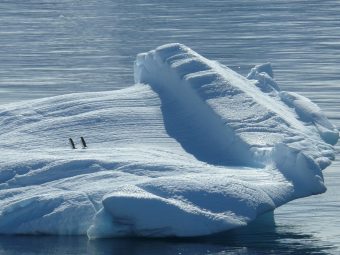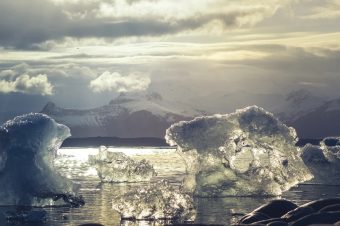
The cryosphere is the area of our planet where water freezes into snow or ice. The cryosphere is divided into snow, ice, glaciers, ice shelves or icebergs, sea ice and permafrost. Some of them freeze and thaw seasonally, while other areas have been frozen for thousands of years and are classified as permafrost. Data compiled by the World Meteorological Organization (WMO) show that 70 per cent of fresh water on Earth is in the form of snow or ice and that about 10 per cent of the planet’s surface is covered by glaciers or ice sheets. The melting of such surfaces can lead to important changes such as the loss of habitats for various plant and animal species, either by the disappearance of ice areas or by the rise of sea levels, which would flood coastal areas as a result. Furthermore, changes in the salinity of seas and oceans and ocean currents should also be noted. Humankind is the villain here as it has caused climate change and global warming.
The special report on the ocean, cryosphere and changing climate, prepared by the Intergovernmental Panel on Climate Change (IPCC), shows how important the preservation of such areas is and how the aforementioned environmental problems affect their disappearance, thus jeopardizing the living world.
The communities that inhabit coastal areas, small islands, polar regions and high mountains are particularly exposed to changes that occur in the cryosphere and thus in the oceans. The available data show that the low-lying coastal area is inhabited by about 680 million people, while predictions are that by 2050, this number will increase to more than one billion. When it comes to high mountain areas, available data indicate about 670 million people, while predictions show that it will increase to about 800 million by 2050.
More:
- ARCTIC REPORT CARD DOCUMENTS EVIDENCE OF ACCELERATING CLIMATE CHANGE
- THE 2023 TREND CONTINUES – JANUARY 2024 WARMEST YET
- WARMING, ACIDIFICATION, DROPPING OXYGEN LEVELS THREATEN EUROPE’S SEAS
What changes have been observed and what consequences do they bring?
In the last few decades, under the influence of global warming, there has been a widespread reduction of the cryosphere, which includes mass loss of ice sheets and glaciers, reduction of snow cover and the extent and thickness of Arctic sea ice, while permafrost temperature has been growing. For instance, between 2006 and 2015, the Greenland ice sheet lost mass at a rate of about 270 gigatonnes per year, while the Antarctic ice sheet lost about 155 gigatonnes per year.

Regarding the world’s oceans, since 1993, the warming rate has more than doubled. Estimates show that the rate of global mean sea level rise from 2006 to 2015 was about 2.5 times higher than that from 1901 to 1990. If the Antarctic ice sheet melts completely, it will lead to a rise in sea level by 58 meters. Depending on different scenarios, which include the impact of global warming emissions, the global mean sea level is predicted to rise between 0.43 and 0.84 meters by 2100 compared to the period between 1986 and 2005.
Such changes have a direct impact on the functioning of the ecosystem. With the melting of ice surfaces, many plant and animal species lose their habitats, which is why they die out or move to other habitats, causing a shift in the food chain. Phytoplankton blooms occur earlier in the year, indicating changes in sea ice and nutrient availability. The report’s data also show that almost 50 per cent of coastal wetlands have been lost in the last 100 years, which is a result of sea level rise and global warming. All the previously mentioned changes have a negative impact on food and water security, especially in the areas that are most threatened by these changes. As a final example of dangerous consequences, one could cite an increased risk of disease. The melting of glaciers and permafrost releases various microorganisms and mercury, which continue to circulate in the environment through water, soil and food.
Previous years were record-breaking in terms of temperature and January 2024 continued the trend because it was the warmest month in the recorded. An additional problem is the fact that, for example, the Arctic is warming twice as fast as the rest of the planet.
Katarina Vuinac

